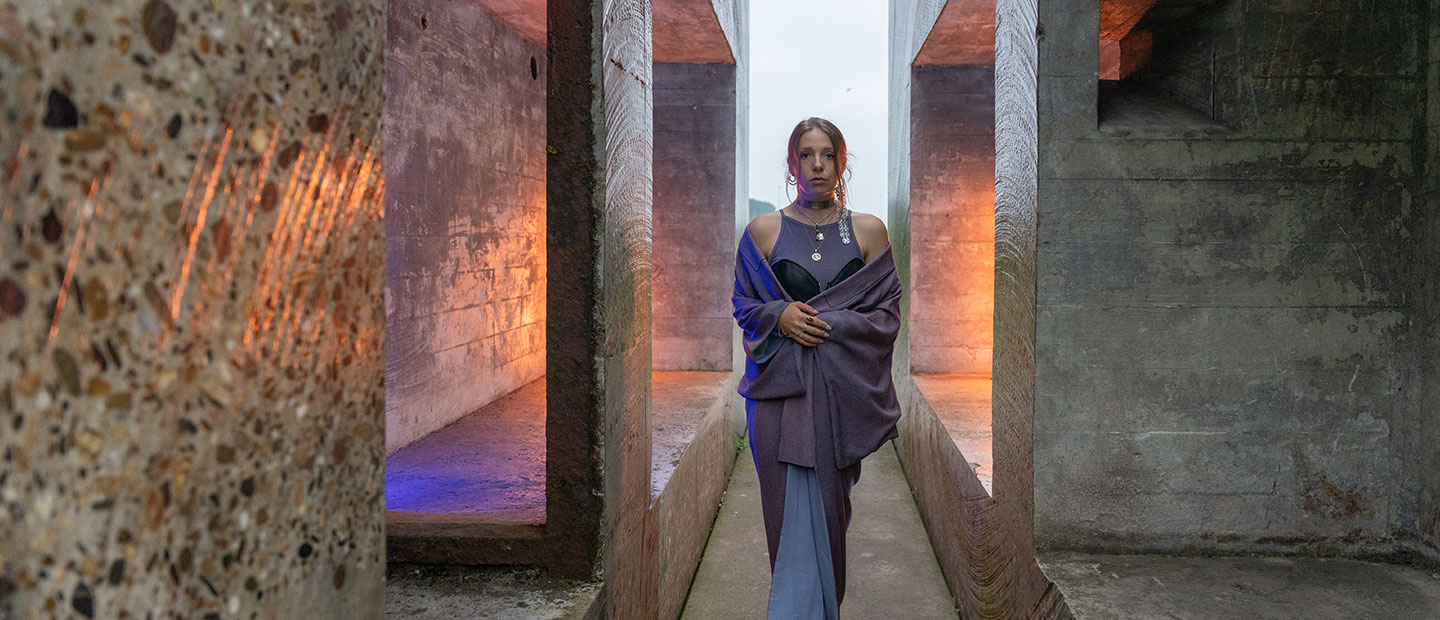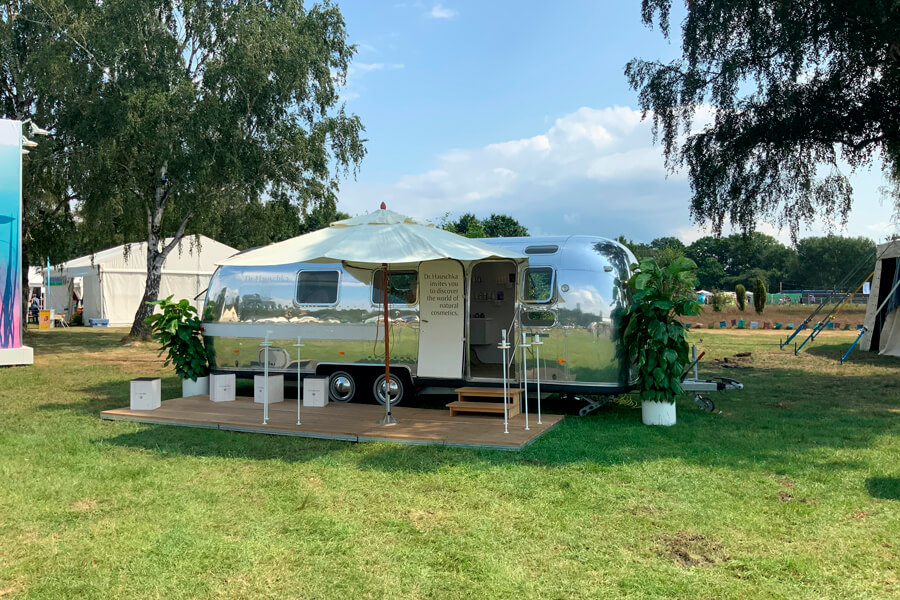Partnerships
Designer Amber Jae Slooten Explores Identity Without Limits in Digital Fashion.
In our Faces series we introduce a number of inspirational women who live out their own vision of our world, of beauty, impact and curiosity, in both their private and professional lives. Amongst others we hear from Amber Jae Slooten, who researches and experiments in the field of ‘virtual fashion’ and through her work takes a critical view of ‘fast fashion’.
Amber Jae Slooten designs clothing exclusively for digital spaces. By side-stepping the environmental waste and limitations of the physical world, Slooten challenges practices that are destructive and fundamentally unsustainable. Fascinated by both gaming and dress-up as a child, Slooten has connected her two passions with the conviction that the fashion industry must change. She believes in logical solutions and in following her instincts—this lead her to co-found The Fabricant (where she is also Creative Director), a fashion house whose stated intent is, “Always Digital, Never Physical: We waste nothing but data and exploit nothing but our imagination.” Beginning in 2014, she stopped sewing garments and began a search for the best tools for designing in virtual, augmented, and mixed realities. She graduated from the Amsterdam Fashion Institute in 2016.
Her expert use of 3D modeling techniques, motion capture suits, and 3D scanners brings viewers into a world filled with powerful emotion, beauty, and design. She spoke about hope, change, and intuition from Amsterdam.
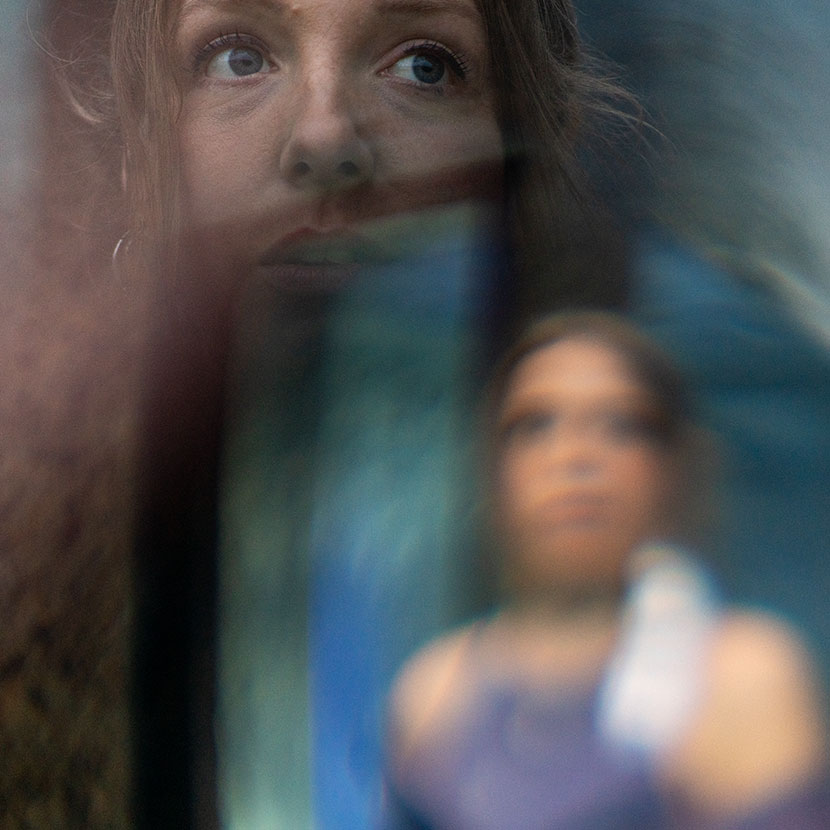
What is the most common reaction to the work that you do?
I say that I create digital clothes—clothing for digital identity or your digital life that never exists in the physical world. Most people react with some skepticism or misunderstanding. I explain that the clothing is designed for avatars, online gaming, Instagram, or any online space. Before the pandemic, fewer people understood what an online-only space entailed. But now, given Zoom and how many people stayed connected and in communication through digital platforms, this is much more widely understood. I find I don’t have to do as much explaining now.
What first drew you to fashion and designing clothes?
I've always been fascinated by identity. As a little girl I would often play dress-up because I loved the ability to switch identities with new outfits. My mom knew how to sew and work with fabric, and she often made my clothes. I remember walking through museums and wanting to wear the costumes that I saw, as a way of transporting myself. I was also into computers and gaming as a kid, games like SIMS in particular really interested me because of the endless options for how to dress the characters—that was more fascinating to me than playing the game itself. At some point I figured out how to hack the software to find the special edition green and purple skin colors. Then as I got older, I was very inspired by designers like Hussein Chalayan and Issey Miyake because they created rich narratives behind the fashion that they created. That bigger storytelling is hugely important to me.
What is your first memory of interacting in an online space?
I am a millennial and grew up playing outside, in the street, and offline. And then, at some point, we had a computer in the house. This was back in the day when I would have to switch off the telephone in order to use the Internet. I remember both my grandpa and my uncle were proficient and advanced in understanding how to use computers. My uncle was a software developer and at one point he brought one of the computers that he had to our house and installed Photoshop. He taught me how to draw and create using these online tools. It was so exciting and ever since that first exposure, I was compelled by what was possible within gaming environments.
What made you combine these two worlds more formally?
As a teenager, I gamed after school a lot and I was much more interested in the online space than most of my friends. I knew I wanted to do something creative, and I chose to study fashion because it felt most true to who I was. Almost immediately, in fashion school, I noticed how physical it was. There were almost no digital elements and very little use of technology. I remember being overwhelmed by the piles and piles of materials and recognizing just how wasteful it was. The process was very slow when it came to designing but I had tons of ideas and felt frustrated that I couldn’t actualize them because I couldn’t work quickly enough or didn’t have the materials that I needed. I felt the limitations of my creativity acutely in the physical world. There were also other parameters like the size and shapes of clothing we could make. There was only one model and if I wanted to make clothing for more diverse shapes and sizes, I had to pay for other models which were expensive.
At some point, one of my teachers introduced me to new software that enabled the fitting of clothing before physically making the garments. It allowed for so much more experimentation even though it was not very advanced. This ultimately led me to take a semester off to do further research and I ended up working on an interdisciplinary project where we created a virtual fashion experience. I kept researching, looking for better tools to continue this work and at some point, I found a software called CLO 3D which I really loved. The possibilities felt endless, and it felt like a game. I contacted the company, and they sent our group a license. It felt like magic.
When did you realize there was momentum in this innovative approach?
During my studies, the Rana Plaza building in Dhaka, Bangladesh, collapsed. That killed over a thousand people who worked in the sewing factories. The documentary The True Cost came out shortly after that. The environmental and social implications of the industry were known before that, of course, but there was more and more information coming out and I felt a huge responsibility to do something differently. I didn’t want to add to this problem by continually contributing to the enormous pile of waste.
A lot of people were really against what I was trying to do. People thought I was absolutely crazy for making digital clothing that had no physical element. Because of my interests when I was young, I was able to connect the dots. It’s an intersection that I am really passionate about and, in a way, more personally, I feel like I don’t have a choice. This work is coming from my heart, and I am so genuinely excited about what is possible. Fashion is about the spirit of the times. And, even with some resistance, I was given the space to experiment and push this forward. If I had graduated a year earlier, I might not have been able to make work that connected these dots.
Do you feel like there's a side of the physical world that cannot be expressed or reinterpreted digitally?
The tactile elements can be experienced digitally, and our brains fill in the gap between how something looks and how it might feel. The same goes for emotions. If you see a digital show, it can communicate as much emotion as is possible when watching a physical show. Obviously, you are not physically there but you can use VR to communicate and simulate being in the same space very effectively. The only thing that I miss in the digital world is smell. Smell and taste are missing but I think they are working on that…
What are the differences between fashion and identity in the digital space vs. the physical world?
In the physical world there is a version of ourselves that we all walk around with and in which we are most comfortable. If I were to put on my little brother’s clothes and walk down the street, I would feel super uncomfortable because it doesn’t fit my identity; my external appearance would make me feel like I am not myself. I think identification in this way is not necessarily bad. We've developed our external identities for a reason. This individuation creates beauty, it creates difference, and it creates excitement about other human beings. It's something that we need as a human species; a way to feel inspired and intrigued by each other. Difference is really beautiful and essential.
What I see online is that people dare to experiment much more creatively. When you try on things in the digital world, it can really open people up to a looser, more playful way of seeing themselves. They might play around with gender, skin color, completely different looks than in the physical world. And this playfulness can then inform a freer sense of self or less judgment of others in the physical world too.
What have you learned about yourself in the process of going against the grain, and trying to change old patterns?
I have learned that I can trust my intuition. The more people who understand how important and useful it is to explore the digital spaces—how logical it is—the better. It saves materials, it saves money, it is more experimental and more inclusive; there are so many benefits. More and more people are starting to see that change is coming. So, after lots of resistance, I have learned to trust my own vision and to also trust that collaboration is key. I have not done this alone. There is an entire team of people who are interested and committed to working this way. That team includes everyone at The Fabricant and also everyone I’ve crossed paths with who has expressed interest in digital fashion. I have found that in sharing my ideas, others are taking those ideas even further. It’s a beautiful and creative act to move an idea forward, together. In fashion school, you are often taught that you need to do your own thing, have your own label, you need to become the next Alexander McQueen. I believe that is no longer relevant for this age. That is an old-fashioned model and we must move on. Collaboration and working together on a digital fashion project—bringing multiple minds together—has been incredible and is the future of how great ideas emerge.
At The Fabricant we also try to share information and inspire other designers by teaching on Twitch streams or offering all sorts of useful content for free download. We lead challenges of sorts where we give an avatar and a prompt and then the craziest, most beautiful designs are made. This comes from a place of understanding that through the sharing of knowledge, the sharing of resources, and sharing all we’ve learned, we can collectively push the industry forward.
What do you find as hopeful in the future of the fashion industry and digital technology?
I see digital fashion brands dipping their toes in digitization more and more, especially by making their sample collections online. This has helped reduce the shipping of materials back and forth to factories around the world and makes quite a difference. Part of what we do at The Fabricant is to help fashion brands incorporate this technology and support incremental change. There are companies that have digitized their sample collections and have therefore reduced their waste by up to 80%. Brands are also jumping into the space of digital-only products. We did a runway project with Puma where we created videos for them in the desert but there was no travel needed, no film crews, no shipping, no models. We did it all from our studios in Amsterdam. We designed a shoe with a company called Buffalo London which was only available on Instagram. In 2019, we sold the first ever garment on the block chain for the equivalent of $9,500 USD. It really shocked a lot of people that there was that much money to be made with a digital item that has no physical life. We have continued to do NFT drops, and we always try to make sure to do that on sustainable platforms because we know the environmental impact of cryptocurrency too. After the recent boom in NFTs and the expanded use of cryptocurrency, the world is opening up to a new power structure that is not about the individual but instead about decentralization. Hopefully in the future we will have a fairer system using this kind of technology and we will get to experiment with how a decentralized society operates. There are so many people working very hard right now to create better systems that are less damaging to the planet and more collective. This makes me really optimistic.
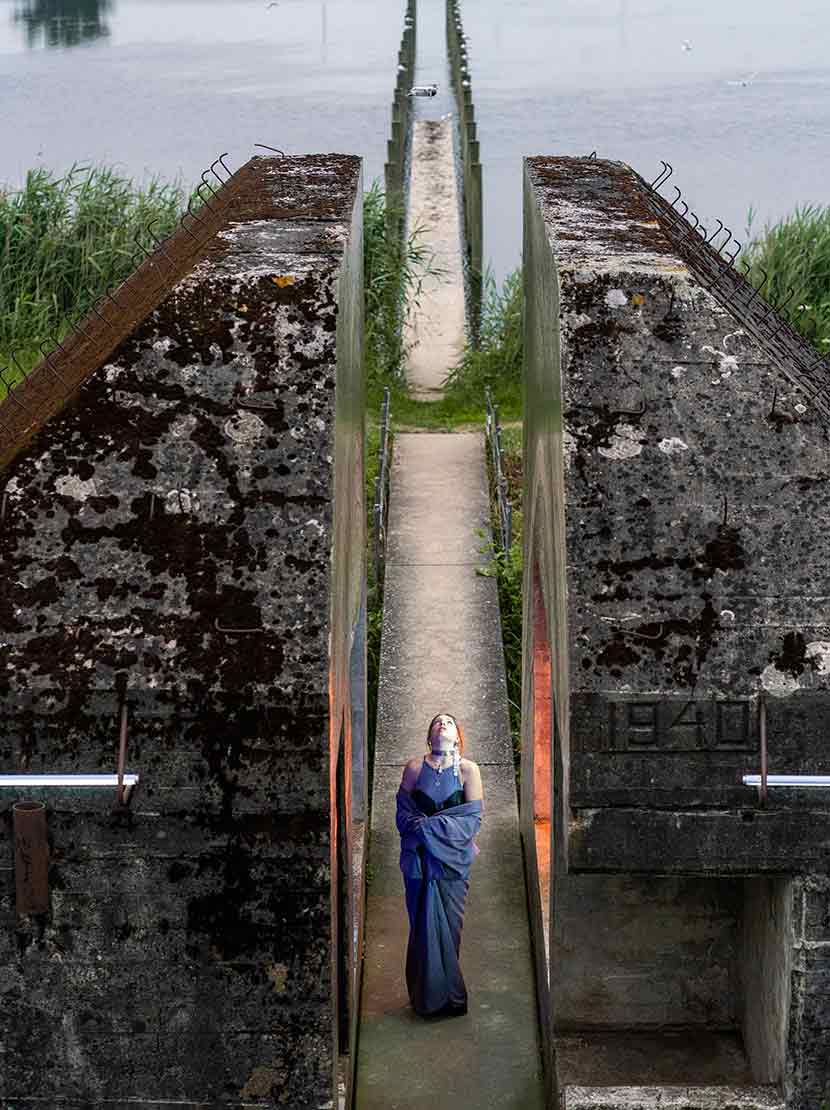
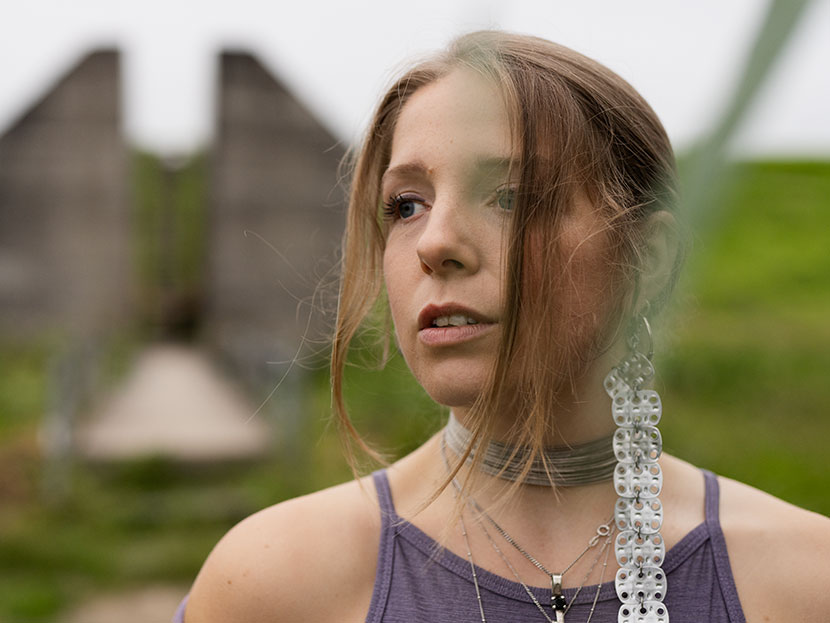
This interview is part of “A Different View On Cosmetics,” a content series produced in collaboration with Friends of Friends. Showcasing female creatives who challenge conventional ways of thinking within their field, each profile highlights women who share a sense of responsibility to create ecological, social, and economic change. With passion and conviction, these inspirational figures demonstrate integrity, innovation, and curiosity. Along with Amber Jae Slooten, this series includes features on journalist, photographer, and VR filmmaker, Julia Leeb, and editorial director of The Lissome Magazine, Dörte de Jesus.

